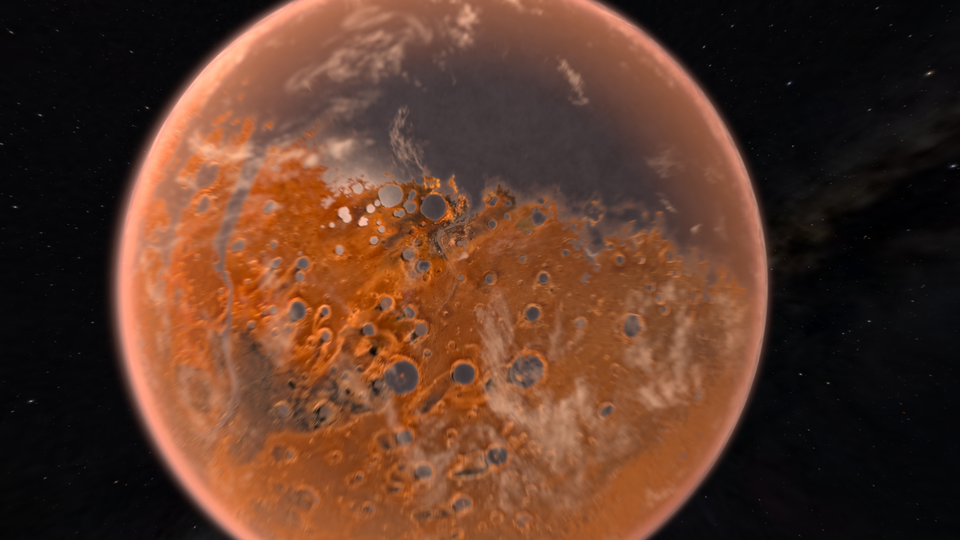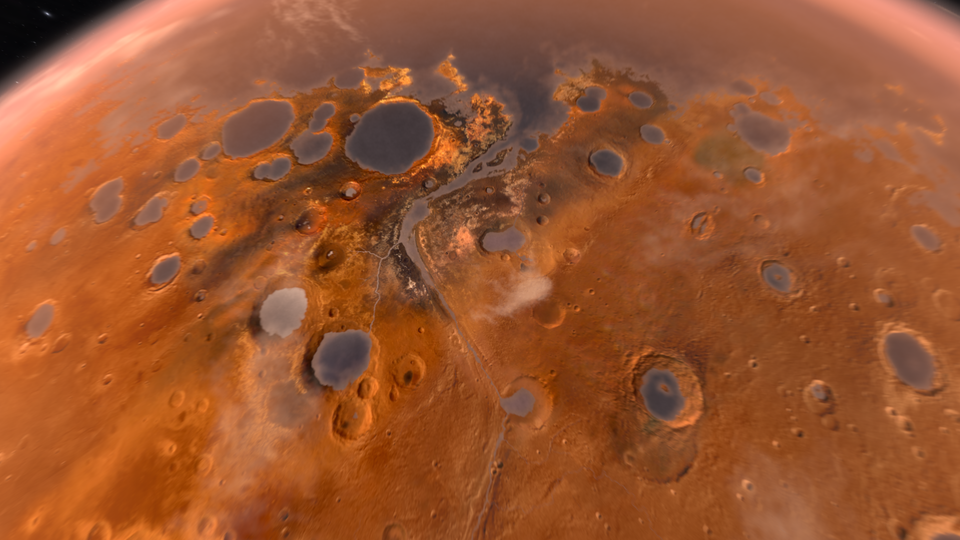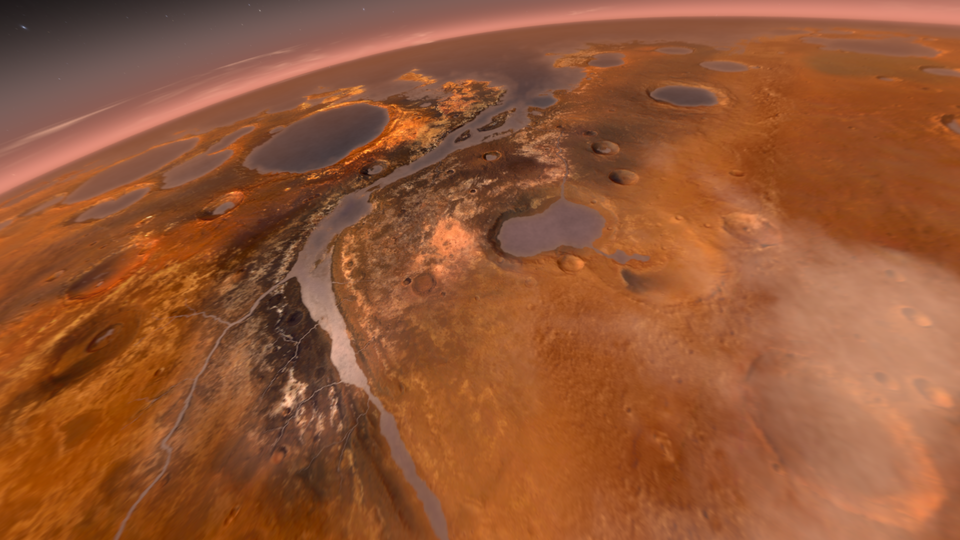Science News
The Future of ISS, Ancient Mars Ocean, and Black Holes
Future Space Station Plans Take Shape
A year ago, NASA committed to extending operation of the International Space Station (ISS) to 2024, giving it a new lease on life beyond the previous decommissioning date of 2020, with the possibility of a further extension of operations through 2028. This extension also provides business for private companies such as SpaceX, Boeing, and others not only to continue commercial resupply flights to ISS but also to position themselves as a lower-cost alternative to American astronauts thumbing pricey rides to the station aboard Russian Soyuz spacecraft. As a result of the retirement of the Space Shuttle, NASA currently pays Russia about $70 million per astronaut for the service.
While other ISS partner nations have yet to announce their plans, the Russian space agency, Roscosmos, also voiced its intent this week to continue supporting ISS through 2024, but revealed that it is already thinking ahead to the construction of a new Russian space station. Currently referred to as OPSEK (Orbital Piloted Assembly and Experiment Complex), this new, smaller station would ultimately serve as an assembly point for future Russian missions to the Moon and Mars.
The Russian plan is to detach its existing modules from ISS and reuse them as the core of the new Russian outpost. The rest of the vacated ISS will be steered into a fiery reentry through Earth’s atmosphere, crashing into the remotest part of the South Pacific known as the “Spacecraft Cemetery,” where the Soviet Mir space station (1986–2001) met a similar fate.
When construction started in 1998, the International Space Station was given a life expectancy of 15 years, although its practical lifetime is probably about twice that. Sooner or later (preferably later), airtight seals degrade, materials succumb to solar radiation, micrometeoroids inflict damage, and other hazards of the space environment, such as metal stress and fatigue, inevitably cause problems… Which raises the question: what’s next?
The Russians have their answer in OPSEK. Likewise, the Chinese, have been developing their own space station, working toward it with a series of Tiangong test vehicles, similar to the Soviet Union’s Salyut series of orbiting laboratories that eventually led to Mir. And NASA may rely on private industry to build the next space station. Since 2006, Bigelow Aerospace of Las Vegas has been flying unmanned experimental habitat modules in orbit, based on a NASA design for inflatable structures, which may ultimately become the basis for a future commercial space habitat. –Bing Quock
Ancient Ocean on Mars
Whether or not the now dry Red Planet once had water is no longer a question. Rather, scientists are now asking how much water once covered Mars’s surface. According to a study published this week in Science, researchers estimate that a primitive ocean on Mars held more water than Earth’s Arctic Ocean.
So how did the authors reach this conclusion? “Our study provides a solid estimate of how much water Mars once had, by determining how much water was lost to space,” says lead author Geronimo Villanueva, a scientist at NASA. “With this work, we can better understand the history of water on Mars.”
The new estimate is based on detailed observations made at the European Southern Observatory’s Very Large Telescope in Chile, and the W.M. Keck Observatory and NASA Infrared Telescope Facility in Hawaii. With these powerful instruments, the researchers distinguished the chemical signatures of two slightly different forms of water in Mars’s atmosphere. One is the familiar H2O. The other is HDO, a naturally occurring variation in which one hydrogen is replaced by a heavier form, called deuterium.
By comparing the ratio of HDO to H2O in water on Mars today and comparing it with the ratio in water trapped in a martian meteorite dating from about 4.5 billion years ago, scientists can measure the subsequent atmospheric changes and determine how much water has escaped into space.
From the measurements of atmospheric water in the near-polar region, the researchers determined the enrichment, or relative amounts of the two types of water, in the planet’s permanent ice caps. The enrichment of the ice caps told them how much water Mars must have lost—a volume 6.5 times larger than the volume in the polar caps now. That means the volume of Mars’ early ocean must have been at least 20 million cubic kilometers (five million cubic miles).
Based on the surface of Mars today, a likely location for this water would be in the Northern Plains, considered a good candidate because of the low-lying ground. An ancient ocean there would have covered 19 percent of the planet’s surface. By comparison, the Atlantic Ocean occupies 17 percent of Earth’s surface.
In a video released by NASA to accompany the new study, Villanueva says, “It’s fascinating that we can learn so much about 4.5 billion years ago with measurements taken right now, and ultimately we can conclude this idea of an ocean covering 20% of the planet, which opens the idea of habitability, and the evolution of life on the planet.” –Molly Michelson
Star Formation Strangeness Around Big Black Holes
A new study on black holes has yielded a strange result. A far cry from the voracious “holes in the Universe” popularized in modern media, black holes appear to be somewhat self-regulating. Some supermassive black holes (such as Sagittarius A* within our own Milky Way) dwell within the round middle regions of galaxies called the central bulge.
Counterintuitively, it seems that these behemoths might influence the formation of stars in the galaxy—not by gobbling them up, but by stopping them from forming!
Within the hot active regions of the galaxy NGC 2597, gas is radiating heat, cooling down, and condensing into stars. Losing energy is a critical step in star formation—if the gas is too hot and energetic, the diffuse gas cannot form stars. As the cool gas in NGC 2597 condenses, however, some material falls into the central super massive black hole and it shoots out intense beams of energy, exciting the gas again, causing it to spread out and radiate its energy all over again! While this cycle is not truly self-sustaining (a small amount of matter is lost to the black hole each time) it is extremely efficient—therefore long lasting—and accounts for why there seem to be unusually few stars in the central regions of the galaxies in question.
All signs indicate that this process has been cycling within NGC 2597 for at least seven billion years and we have not seen any indication that it will end soon. While mechanisms like this might seem abstract in the extreme, they do give us a deep look into galactic evolution and perhaps a better understanding of how stars form (or don’t form) within them. –Josh Roberts
Image(s) from Life: A Cosmic Story, California Academy of Sciences Visualization Studio



